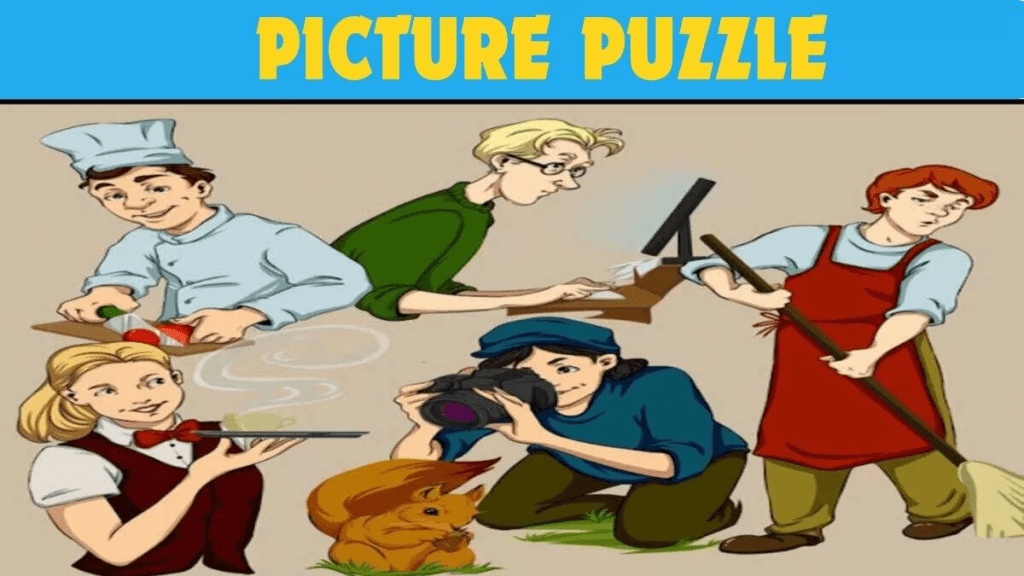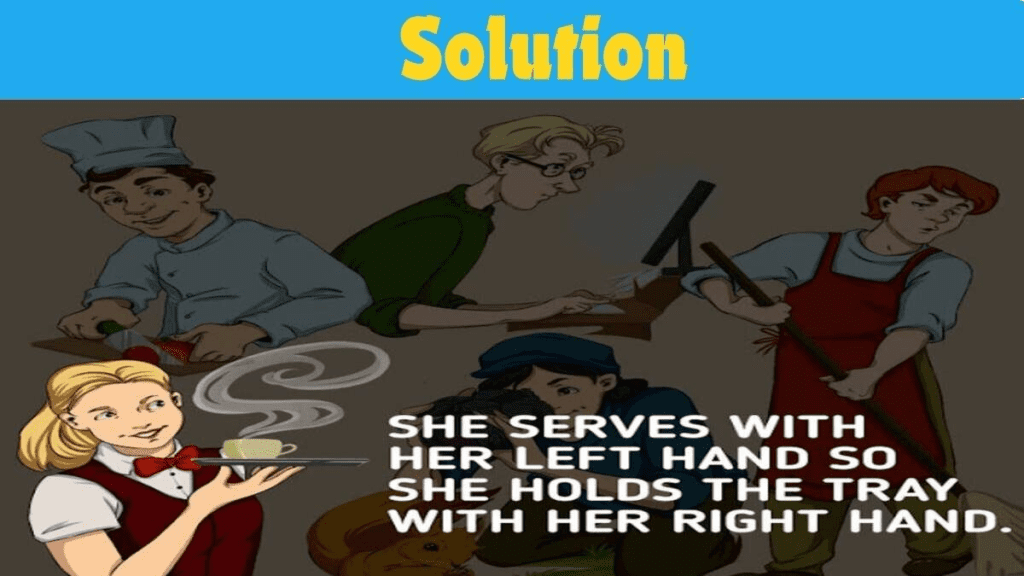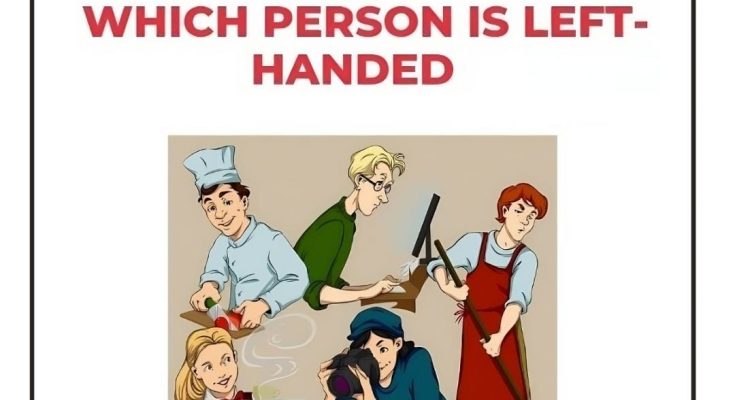Ready to sharpen your observation skills? Here’s a challenging picture puzzle that invites you to identify a left-handed person among a group of workers. This exercise requires a keen eye for detail and a bit of logical reasoning, and it’s trickier than it seems! So, let’s dive in, analyze each character carefully, and see if you can find out who’s the left-handed individual. Think you’re up to the task? Let’s solve this puzzle together!
Avoiding Common Mistakes in Puzzle Solving

When tackling puzzles like these, it’s easy to jump to quick conclusions based on initial assumptions. Many people might think that anyone holding an item with their left hand must be left-handed. But not so fast! This puzzle challenges us to look deeper. Often, the answer isn’t right in front of us but hidden in small, subtle details. Sometimes, it’s all about focusing on practicality—how each character uses their hands and the purpose behind each action.
Step-by-Step Guide to Finding the Left-Handed Worker
To get to the answer, let’s examine each character one by one and pay close attention to the way they use their hands.
1. The Chef
The first character we spot is a chef, diligently slicing vegetables on a chopping board. At first glance, it might seem like the hand holding the knife would indicate handedness. Most chefs, however, develop strong ambidextrous skills out of necessity, often holding items with both hands. Here, we see the chef using their right hand to handle the knife, suggesting they’re likely right-handed. No left-handed clues here—let’s move on!
2. The Waitress
The waitress is the next character we come across, balancing a tray with a cup of coffee on it. Now, this is where things get interesting! She’s holding the tray in her right hand while using her left hand to serve. This could be a big clue. Typically, a right-handed person would hold the tray with their left hand, freeing up their dominant right hand to serve. The fact that she’s serving with her left hand implies she’s left-handed, using her dominant hand for the task requiring precision. It looks like we may have found our answer!
3. The Photographer
Our next character is a photographer, crouching and holding a camera. Here’s the tricky part—most camera designs cater to right-handed users, so both right- and left-handed photographers often use their right hand to operate the shutter. Observing the photographer’s hand placement doesn’t reveal any clear indications of handedness, so this clue doesn’t help much in our puzzle. Let’s keep going.
4. The Office Worker
Next up is an office worker, focused on their computer screen. Typing and using a computer don’t heavily favor one hand over the other, so handedness can be difficult to gauge from this activity alone. Observing this character doesn’t give us any strong clues about whether they’re left- or right-handed. Time to check the last character.
5. The Janitor
Finally, we see a janitor holding a broom with one hand positioned higher on the broom handle. While one might think that this could indicate handedness, using a broom typically involves balancing grip with both hands. Regardless of handedness, people tend to hold brooms in a way that provides the best leverage. Based on the positioning alone, there’s no strong evidence here pointing toward left-handedness.
Answer: The Left-Handed Worker is the Waitress

After examining each character, it’s clear that the waitress is the one displaying left-handed tendencies. The way she serves with her left hand while holding the tray with her right is a subtle yet telling indicator of her left-handedness. This choice of hand positioning reflects how left-handed individuals might naturally approach serving tasks, with their dominant hand controlling the action.
Why Observational Puzzles Like This Are Great for Brain Training
Solving puzzles like this one isn’t just fun—it’s an excellent workout for your brain. This kind of exercise helps sharpen your ability to notice small details, challenging you to observe the things we often overlook. It’s easy to jump to conclusions based on first impressions, but taking the time to analyze each character and their movements brings a rewarding “aha” moment when you finally reach the answer.
Tips for Tackling Observation Puzzles in the Future
- Don’t Rush Your Observations: Sometimes, the most obvious answer isn’t correct. Take a second look at each character’s actions and positions.
- Consider Practical Use of Objects: How people use their hands often tells you more than simply which hand they’re holding something with.
- Look for Subtle Clues: Tiny nuances, like hand positioning or the direction of motion, often reveal handedness.
- Think Outside the Stereotypes: Many people assume left-handed individuals always hold items with their left hand, but in reality, left-handed people adapt to various tasks in different ways.
Conclusion: Did You Spot the Left-Handed Waitress?
So, did you manage to figure it out? The waitress’s serving style was the key to identifying her left-handedness, making her the answer to this intriguing puzzle. Puzzles like this one are great for improving your observation skills and challenging your logic. They remind us to think beyond first impressions and pay attention to small details that often hold the answer. Share your thoughts on this puzzle, and if you enjoyed solving it, why not take on more puzzles to test your attention to detail? Happy puzzling!



